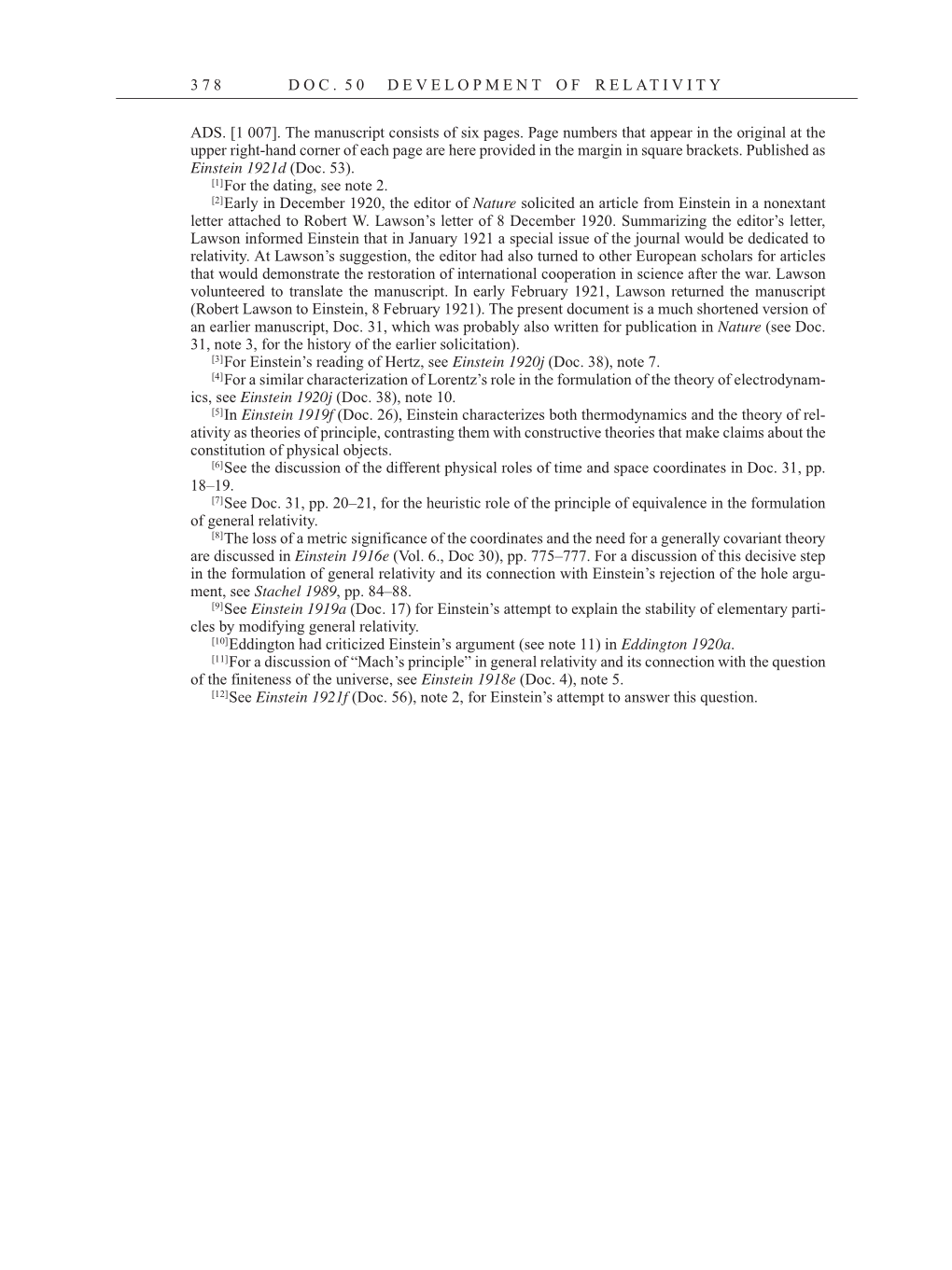3 7 8 D O C . 5 0 D E V E L O P M E N T O F R E L AT I V I T Y
ADS. [1 007]. The manuscript consists of six pages. Page numbers that appear in the original at the
upper right-hand corner of each page are here provided in the margin in square brackets. Published as
Einstein 1921d (Doc. 53).
[1]For the dating, see note 2.
[2]Early in December 1920, the editor of Nature solicited an article from Einstein in a nonextant
letter attached to Robert W. Lawson’s letter of 8 December 1920. Summarizing the editor’s letter,
Lawson informed Einstein that in January 1921 a special issue of the journal would be dedicated to
relativity. At Lawson’s suggestion, the editor had also turned to other European scholars for articles
that would demonstrate the restoration of international cooperation in science after the war. Lawson
volunteered to translate the manuscript. In early February 1921, Lawson returned the manuscript
(Robert Lawson to Einstein, 8 February 1921). The present document is a much shortened version of
an earlier manuscript, Doc. 31, which was probably also written for publication in Nature (see Doc.
31, note 3, for the history of the earlier solicitation).
[3]For Einstein’s reading of Hertz, see Einstein 1920j (Doc. 38), note 7.
[4]For a similar characterization of Lorentz’s role in the formulation of the theory of electrodynam-
ics, see Einstein 1920j (Doc. 38), note 10.
[5]In Einstein 1919f (Doc. 26), Einstein characterizes both thermodynamics and the theory of rel-
ativity as theories of principle, contrasting them with constructive theories that make claims about the
constitution of physical objects.
[6]See the discussion of the different physical roles of time and space coordinates in Doc. 31, pp.
18–19.
[7]See Doc. 31, pp. 20–21, for the heuristic role of the principle of equivalence in the formulation
of general relativity.
[8]The loss of a metric significance of the coordinates and the need for a generally covariant theory
are discussed in Einstein 1916e (Vol. 6., Doc 30), pp. 775–777. For a discussion of this decisive step
in the formulation of general relativity and its connection with Einstein’s rejection of the hole argu-
ment, see Stachel 1989, pp. 84–88.
[9]See Einstein 1919a (Doc. 17) for Einstein’s attempt to explain the stability of elementary parti-
cles by modifying general relativity.
[10]Eddington had criticized Einstein’s argument (see note 11) in Eddington 1920a.
[11]For a discussion of “Mach’s principle” in general relativity and its connection with the question
of the finiteness of the universe, see Einstein 1918e (Doc. 4), note 5.
[12]See Einstein 1921f (Doc. 56), note 2, for Einstein’s attempt to answer this question.
